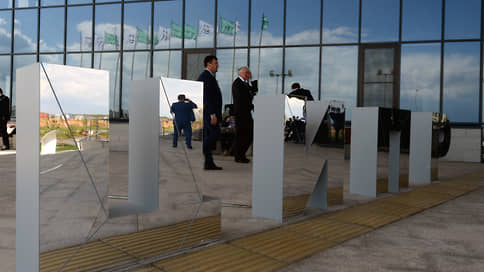The volume of private investment in SEZs over the entire period of their operation has reached 1 trillion rubles.
[ad_1]

Over the 18 years of existence of special economic zones (SEZs) in the Russian Federation, the volume of private investment in them amounted to 1 trillion rubles, but the Ministry of Economy is optimistic about attracting another 5 trillion rubles. The department hopes to increase the attractiveness of the zones by expanding the list of areas of activity permitted on their territory. At the same time, in 2024, all SEZ residents will be transferred to a tax monitoring system – strengthening control will minimize claims from the Ministry of Finance, which has previously repeatedly discussed the insufficient efficiency of SEZs and proposed reducing benefits for their residents.
The volume of private investment in SEZs over the entire period of their operation has reached 1 trillion rubles. Over an uncertain time horizon, the Ministry of Economy is waiting for another 5 trillion rubles. investments in projects – taking into account the emerging positive dynamics. As Vitaly Altabaev, director of the regional development department of the Ministry of Economy, said yesterday, for the three quarters of 2023, the volume of private investment amounted to 339 billion rubles, for the entire 2022 – 197 billion, for 2021 – 150 billion. SEZ residents created 66 thousand jobs, the plans include more than 150 thousand. At the same time, according to the department, the state managed to recoup the budget expenses incurred on the SEZ only in 2023: today the accumulated positive effect for the budget is estimated at 55 billion rubles – 379 billion rubles. tax payments against 324 billion rubles. expenses.
In total, there are currently 50 SEZs in Russia in 43 regions, in which 1.1 thousand resident companies operate. In 2023, 177 new residents came to the SEZ, in 2022 – 141, in 2021 – 157. The rating of the most attractive zones presented yesterday, compiled by the Association of Clusters, Technoparks and SEZs (AKIT) among industrial, production and port zones, again led such large zones as Alabuga, Lipetsk and Ulyanovsk. The leaders of the SEZ of the technology-innovation type were Technopolis Moscow, Dubna and Innopolis. In the “Import Substitution” category, which is especially important for the authorities, the leader was the Alga SEZ, which actively concluded agreements on work in industrial clusters. According to the director of AKIT, Mikhail Labudin, in total, in 2023, 32 SEZs from 26 constituent entities of the Russian Federation were included in the investment attractiveness rating.
The Ministry of Economy plans to expand the list of SEZs—the creation of a zone in Shebekino, Belgorod Region, is being discussed. Industry restrictions are also being lifted – the production and processing of petrochemical products, as well as the production of sugar-containing drinks, may be allowed in the territory of the SEZ.
It should be noted that in recent years, the Ministry of Economy has sought to increase the attractiveness of SEZs: the management system for them has been optimized, the time frame for obtaining resident status has been shortened, and the application of the stabilization clause has been expanded – in addition to taxes, regulatory conditions are also fixed. At the same time, the department has undertaken to tighten control over the fulfillment of obligations by investors – now the agreement with the investor can be terminated unilaterally, and the purchase of land has become possible only after fulfilling the terms of the investment agreement.
Further, in 2024, the Ministry of Economy expects the transition of all SEZ residents to the tax monitoring mechanism provided for by law. Zone management companies must themselves begin work on transferring large residents to it, explained Vitaly Altabaev. For medium and small companies that will find it difficult to meet the requirements for installing the software required for the transition, it is possible to establish tax incentives. The department reminds that the main complaints of the Ministry of Finance relate specifically to the tax discipline of residents – previously it proposed introducing requirements for residents to submit annual financial statements to the Federal Tax Service in order to maintain the application of benefits in order to reduce the share of residents with zero reporting. The Ministry of Finance also repeatedly spoke about the insufficient efficiency of SEZs and proposed limiting the amount of tax benefits for their new residents to the amount of actual expenses on capital investments and R&D in order to stimulate the growth of investments and the creation of new industries.
[ad_2]
Source link






